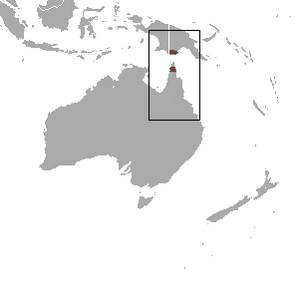Chestnut dunnart facts for kids
Quick facts for kids Chestnut dunnart |
|
|---|---|
| Conservation status | |
| Scientific classification | |
| Genus: |
Sminthopsis
|
| Species: |
archeri
|
 |
|
| Chestnut dunnart range | |
The chestnut dunnart (Sminthopsis archeri) is a small, mouse-like marsupial. It's a type of dunnart, which are tiny meat-eating animals found in Australia and New Guinea. This dunnart gets its name from the warm, reddish-brown color on its back.
These little creatures are quite small. From their nose to the tip of their tail, they measure about 16.7 to 21 centimeters (about 6.5 to 8 inches). Their body, from head to bottom, is 8.5 to 10.5 centimeters long. Their tail is about the same length as their body, measuring 8.2 to 10.5 centimeters. Their hind feet are small, about 1.7 to 2 centimeters, and their ears are 1.7 to 2.1 centimeters long. A chestnut dunnart weighs around 15 to 20 grams, which is about the same as a few quarters!
Contents
Where Do Chestnut Dunnarts Live?
The chestnut dunnart is a rare sight. Only a few records of them exist. You can find them in southern Papua New Guinea. In Australia, they live on the east and west coasts of the Cape York Peninsula. One dunnart was even spotted west of Townsville, in Blackbraes National Park.
These dunnarts like to live in specific places. In Australia, they prefer tall woodlands with stringybark trees. They also live in tall forests where the soil is red. In Papua New Guinea, they can be found in savannah areas. Savannahs are grasslands with scattered trees.
How Do Chestnut Dunnarts Live?
Scientists don't know much about the chestnut dunnart's daily life. They are quite shy and hard to study. We don't have a lot of information about their behavior or how they interact with each other.
However, we do know a little about their breeding. Chestnut dunnarts usually have their babies during the dry season. This season runs from July to October.
What Do Chestnut Dunnarts Eat?
The chestnut dunnart is a carnivore, which means it eats meat. Scientists believe their diet mainly consists of insects. They might also hunt and eat small mammals, reptiles, and amphibians.
See also
 In Spanish: Ratón marsupial marrón para niños
In Spanish: Ratón marsupial marrón para niños


